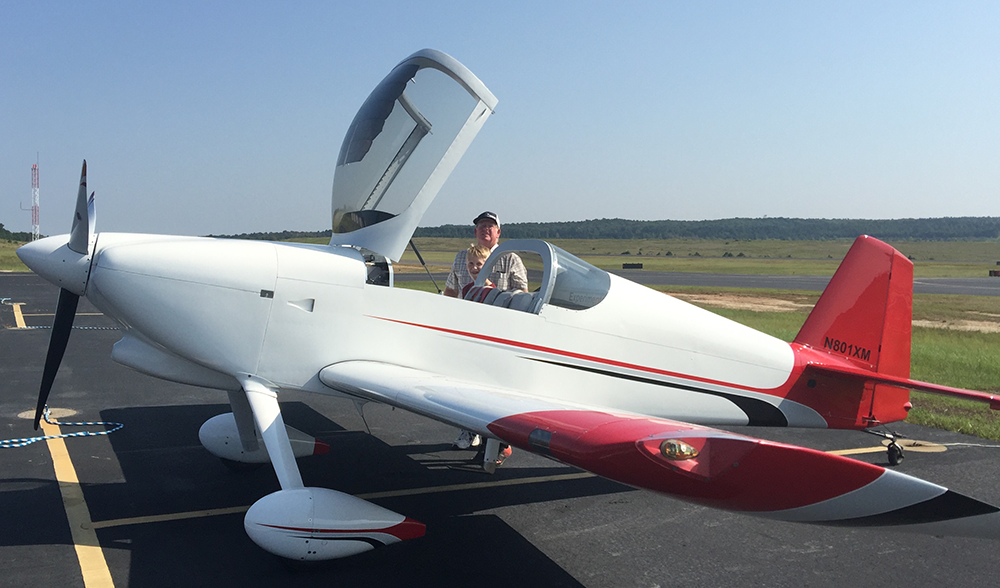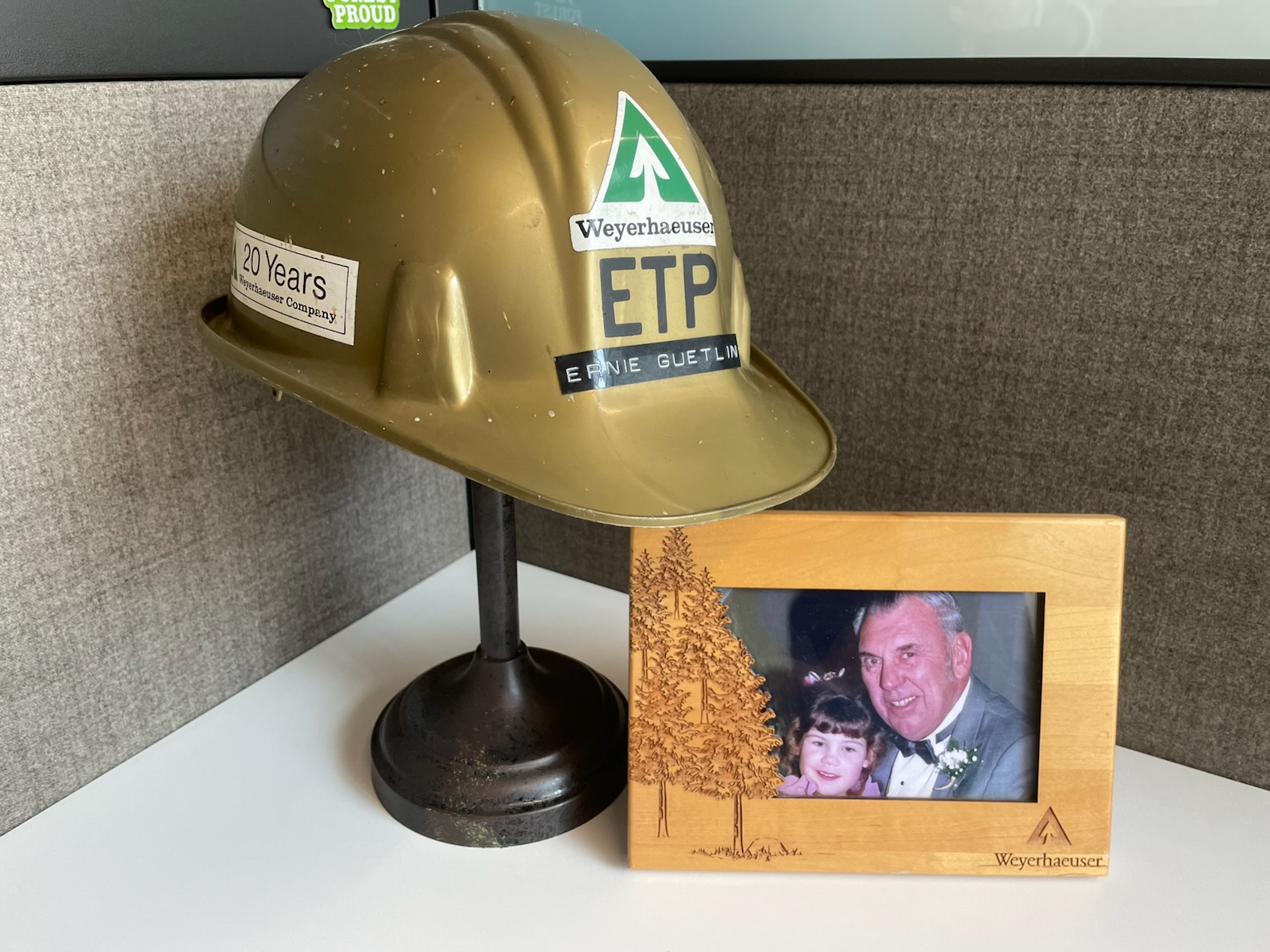Clif and Jonathan Tucker, maintenance planner, look at a print of a part. “When I first started, I was making $3.13 an hour, and yet I was a rich fella,” Clif says. “I got to stay in my community that I knew and loved and do challenging work. It made me feel good to succeed at even the most minor projects.”
In 1971, 15-year-old Clifton “Clif” Homan got a chance to see a machinist in action at a Westinghouse nuclear power facility close to his home in Alabama.
“I was already fascinated with machines and how they work,” Clif says. “That day, I decided what I wanted to do with my life. I immediately started polishing my math skills, then went to school for machine shop technology in Tuscaloosa.”
Two of Clif’s uncles worked for Weyerhaeuser at the time. When he turned 18, one suggested he take a job at our sawmill in Millport.
“I said, ‘I’ll accept the job, but only if I can still get my diploma,’ so that’s what I did,” he says. “And then, somehow, I blinked, and five decades have gone by.”
On Aug. 5, Clif celebrated not just 50 years of working for Weyerhaeuser, but 50 years at Millport and 50 years as a machinist. He’s now a team leader, revered by his colleagues for his unparalleled precision and dedication to his work.
PASSION, PATIENCE AND SKILL
Clif still remembers the very first project he ever worked on at Weyerhaeuser.
“It was fabricating a lead screw for the dry trimmer,” he says. “Cutting the threads on it took me 18 hours. I still remember exactly what it looked like. I had a lot of old millwrights and maintenance folks standing by, counting on me, making sure my work was up to their standards. I learned a lot from them.”
Some of the parts he works with are smaller in diameter than a human hair — which requires both skill and patience.
“Fifty years ago, we didn’t have AutoCAD or any other computer programs. I learned how to do everything manually, drawing parts with a pencil on paper. I still do it that way.”
Brian Harrison, mill manager, and Clif. “My advice to new employees is to do your best at the job you have now, even if it’s not your dream job," Clif says. "That can come later. Put in extra work to learn all you can. It’s worth it. Not only will you be more valuable, you’ll gain confidence, which feels really good by itself.”
WORTH HIS WEIGHT IN GOLD
Teaching and mentoring have been big parts of Clif’s role for decades now. He’s helped shepherd many apprentice fabricators through the early phases of their careers.
“People don’t really train for these trades anymore — they learn on the job,” he says. “You’d be surprised how many of them don’t even know how to use a tape measure. My goal is always to help them become the best millwrights they can be.”
And he doesn’t just develop apprentices. He also has a continuous improvement mindset, learning as much as he can to improve himself.
“I spend many nights watching YouTube videos that might help me gain a new skill,” Clif says. “The smallest detail can be the difference between an expensive machine running reliably or breaking down. Our mill saves a lot of money by having an internal machinist. I can craft custom parts on demand, which saves hours of downtime compared to relying on an external machine shop.”
Between his expertise, his role as a mentor and his experience, Clif’s value at Millport is hard to overstate.
“My phone is often ringing with requests for help or advice,” he says. “I don’t mind. I help keep the mill running and putting out a product we’re proud of. I like to joke that it’s not Weyerhaeuser’s mill, it’s my mill.”
NO END IN SIGHT
When Clif does get some downtime of his own, he often spends it helping others. He became a volunteer emergency medical technician in 1974, the same year he joined Weyerhaeuser, which gave him a unique perspective on the evolution of safety in manufacturing facilities.
“When something went wrong, they’d call me over, because I was the only EMT on hand,” Clif says. “You wouldn’t believe the monster splinters people used to get in plywood mills — bad enough to need a hospital. I’m glad that doesn’t happen anymore!”
He’s also served as a volunteer firefighter, director of the Association of Volunteer Fire Departments, and as a longtime volunteer with the Boy Scouts. He’s a HAM radio aficionado and loves to drive all over the countryside on back roads just to see what he can see.
After 50 years, some people might be dreaming about retirement. Not Clifton.
“Somebody might have to haul me out of here in an ambulance or a hearse,” he jokes. “I love what I do, and I don’t want to leave. In reality, I’ve never worked a day in my life.”


